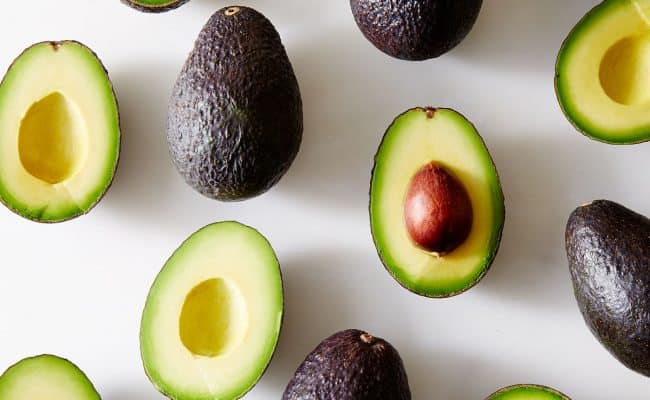
Fat cells are normally thought of as something that you don’t want a lot of. However, there is a type of fat called brown fat that may actually be beneficial for weight loss. In many ways, brown fat acts opposite of white fat cells.
We naturally have brown fat as an infant, and it was thought as we age the brown fat goes away. Adults were thought to have very minimal, if any, brown fat.
Infants use brown fat for temperature regulation before they have the ability to shiver. Brown fat can burn calories and may help to increase metabolic rate.
Therefore, some think if adults can increase their brown fat stores it may be helpful for weight loss.
In a 2007 study (1), researchers found that adults do actually have in varying amounts brown adipose cells.
Researchers are still trying to understand how brown fat is used in adults, how it could play a role in weight management and how/if it is possible to increase brown fat.
Difference between white and brown fat
When you think of losing fat, it is the white fat cells you are trying to lose. Most body fat adults have is considered white fat.
White fat cells store energy and burn very little energy. They can also release something called cytokines which are hormones that can interfere with various body functions.
Carrying too much white fat especially around body organs can increase risk for type 2 diabetes, cardiovascular disease and other chronic diseases.
On the other hand, brown fat cells are brown because they have more mitochondria. Mitochondria are considered power houses of cells because this is where nutrients are broken down and used for energy.
Brown fat cells burn energy instead of storing it.
Mammals and infants use brown fat cells to regulate body temperature via the sympathetic nervous system (2).
When brown fat tissue is turning “on” by nerve cells, they burn a large amount of glucose and fat in order to help regulate body temperature.
Brown fat tissue also has something called uncoupling protein-1 (UCP-1) which scientists believe helps increase metabolic rate.
As fuels are being broken down for ATP, UCP can make this process somewhat inefficient meaning more energy is needed to get fuel. Researchers are continuing to study the role UCP may have in fighting obesity (3).
Do adults have brown fat?
Infants and mammals were known to have brown fat tissue to help with thermal regulation. It was assumed brown fat disappears as we age.
However, a 2009 study (4) examined lean and obese men to measure brown adipose tissue. Researchers found adults do have brown fat tissue, and interestingly obese men had lower levels of brown fat tissue.
In fact, BMI and body fat percentage were negatively correlated with brown fat tissue. This means, for some reason, if you have a higher BMI and carry more white fat cells, you are less likely to have higher levels of brown fat.
Therefore, researchers are studying if increasing levels of brown fat tissue can have an impact on weight loss and best ways to increase brown fat tissue.
In humans, brown fat could contribute to overall calorie burn substantially according to some researchers.
Turn down the heat
Brown fat is stimulated to burn calories when the body is put in a cold environment, and research (5) has shown putting adults in cold environments can activate and may help increase brown fat levels.
In a Scientific American article (6) researcher Paul Lee from the Garvan Institute of Medical Research in Sydney suggests lack of temperature variation may play a role in the lowered amount of brown fat cells as we age from infancy.
Of course, lifestyle choices like diet and activity level are large contributors to obesity risk, but lack of temperature variation could impact the level of brown fat tissue in the body.
Could turning your thermostat lower really help increase your brown fat tissue and lead to significant weight loss?
More research is needed. Researchers are still determining how long or to what degree temperature variations can help stimulate brown tissue function.
Also, keep in mind lowering your heat isn’t comparable to an equal trade off for changes in habits with diet and exercise for weight loss.
Ramp up the exercise
What if you don’t want to chronically be uncomfortable in a cooler environment; is there another way to increase brown fat?
The answer is yes, but more research is needed to further understand the impact on brown fat. The other way to increase brown fat is from exercise.
According to a Scientific American article (7), exercise stimulates the release of a hormone called irisin from muscle cells.
Irisin can act on white fat cells to act more like brown fat (making beige fat cells). These new beige fat cells are similar to brown fat in that they burn more calories instead of store them.
However, researchers think brown fat is still the optimal for calorie burning potential. Instead of focusing on shifting white cells to beige fat cells, it may be more advantageous to focus on not losing and increasing brown fat.
Another potential benefit from exercise is it can also increase the activity of UCP-1 in actual brown fat cells. The increase in the UCP-1 will increase calories burned.
Conclusion
Recent research has shown that adults do have the capacity to have brown fat. Having more brown fat is associated with a lower BMI and lower body fat levels.
Brown fat, unlike white fat, burns calories and contributes to overall calorie burn. Brown fat is signaled to turn on when the body is in colder climate in attempt to regulate internal body temperature.
Could increasing brown fat levels help with fat loss? It is a possibility researchers are studying further.
One way that has been shown to increase brown fat is to be put in cool climates. Lowering your thermostat may be one practical way to help increase brown fat tissue, but more research is needed.
Exercise can also stimulate brown fat and may even help turn white fat cells to act more like brown.










